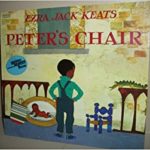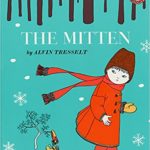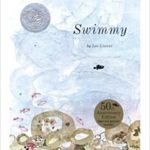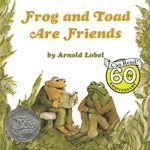News from the Head of School
In the last couple of weeks, we have met with several parents in person or on the phone regarding children’s behavior. As the year progresses, children get older and they go through various phases of growth and development. This is all very natural. It is also natural for parents to ask many questions regarding the developmental stages, especially when children start expressing themselves in ways that are not the most positive. Many things that we consider as “the norm” and usual behavior for young children can be worrisome to families. Research shows that some of these behaviors are signs of a healthy growing child. Yes, even when they talk back or test your patience level by telling untrue stories.
Here are two articles that I hope you find helpful and enjoy reading.
Annoying behavior reflects children’s growing understanding of people
https://www.princeton.edu/news/2015/09/28/economist-currie-investigates-building-blocks-childrens-success?section=featured
THANKS…
Dana Rysankova, Alia Goodyear, Mary Hilari, Katherine Hohman, Tom Jennings, Cary Lawrence, Alex Jadin, Mirenda Meghelli, Benedict Wagner-Rundell and Thor Alden volunteered for the February clean-up day. Matthew Levin chaired this event.
SALARIES
Each year at this time, when the Board is considering the budget, we try to inform parents on our base salaries for teachers. This year the starting salary for assistant teachers is $32,949 and for lead teachers is $42,882.
PROFESSIONAL DEVELOPMENT
Makai Kellogg attended the Diversity Peer Network Gathering in Pennsylvania and focused on the theme ” In the Midst of History: Embracing the Tension in Uncertain Times”.
FACEBOOK
Please follow us on Facebook. We share articles providing useful tips and related to recent research. You can also see pictures of our teachers and activities from the classrooms.
Berna
![]()
Monarch Butterfly Newsletter
Buddy Play: Developing Friendships
“Teaching children to care about others early in life grows as a result of the development of emotional intelligence (Goleman, 1995). Emotional intelligence, according to Goleman, is the ability “to rein in emotional impulse; to read another’s innermost feelings: [and] to handle relationships smoothly” (p. xiii, 1995). When emotional intelligence is nurtured from an early age, it enables children to deal with situations involving caring moments. As children are exposed to caring events, and as they are encouraged to “imitate what they see, children develop a repertoire of empathic response” (Goleman, p. 99, 1995)” (Mecca, n.d.).
Friendship skills children are learning
To develop good friendships, now and later, it is crucial children begin developing the following skills:
- Self-control: being able to wait for what they want, using words to express their feelings rather than acting disruptively or misbehaving, giving others a turn with toys.
- Welcoming: being able to approach and respond to others positively (e.g., with a smile and greeting such as ‘hello’).
- Assertiveness: being able to say what they would like.
- Consideration: being able to say ‘please’ and ‘thank you,’ taking turns, being able to lead and follow what others want to do, being able to cooperate and share.
- Play skills: being willing to take part in games and make suggestions for play.
- Communicating: talking and listening to others in a friendly way, saying something to start a conversation.
- Helping: being willing to help others.
- Prediction: being able to understand how others might be feeling based on their behavior, being able to predict how their behavior might affect others.
- Thinking: such as about alternatives when things go wrong (e.g., if other children want to play something different, thinking of whether to join them or find someone else to play with).
- Coping: being able to respond to rejection, disappointment or disapproval without experiencing too much distress or winning without gloating.
- Empathy: being able to respond to others’ feelings with understanding.
- Flexibility: being open to hearing or learning about other points of view or ways of doing things.
It takes a long time to learn these skills, and we continue to develop them well into adulthood. We can help children develop these skills by being aware of what friendship and empathy skills they are growing, playing with them and giving some gentle coaching when children are struggling with something. Children develop these skills through daily experiences; however, if you are aware of them you can give a hand at moments when some help is needed. You can do this by playing puppet games with children to help them practice these skills (e.g., “What will the puppet do if we push him? If we smile at him? If we say we like what he is doing?”).
In the Butterfly Room, our focus for two weeks has been buddy and buddy play. With each theme, “we select books for children that 1) are at the child’s developmental level; 2) have a well-developed plot; 3) are skillfully illustrated; and 4) portray colorful and appealing characters” (Mecca, n.d.). In the case of our buddy theme, we chose a book, Stick and Stone by Beth Ferry that emphasized caring characters who help others show compassion and share with others. In the book, both stick and stone were sad because they were alone. When Stick rescues Stone from a prickly situation with a Pinecone, the pair becomes fast friends. The book teaches us that we should stand up for each other and treat each other fairly.
Other books that emphasize caring characters who help others, show compassion, and share with others are:




References:
Learning positive friendship skills. (n.d.). Retrieved January 31, 2018, from https://www.kidsmatter.edu.au/mental-health-matters/social-and-emotional-learning/social-development/learning-positive-friendship
Mecca, M. E., Ph.D. (n.d.). Teaching Children to Care: The Literature Approach. Retrieved January 31, 2018, from http://www.earlychildhoodnews.com/earlychildhood/article_view.aspx?ArticleId=324
![]()
Red Panda in February
Happy February, Red Panda Families! We’ve all heard of “the terrible two’s,” but is there much truth behind the expression? Two year-olds are dealing with so many changes and transitions (emotionally, physically, developmentally) that perhaps throwing a label on it such as “the terrible twos,” is too simple. The article “Toddlers and Challenging Behavior: Why They Do It and How to Respond,” found on zerotothree.org, gives us a bit more information on this age and how we, as adults, can handle the sometimes (very) frustrating behavior.
- Learning to Handle Strong Feelings
- At two years-old, toddlers are beginning to experience incredibly strong, varying emotions, such as pride, shame, guilt and embarrassment. Because this is the first time they’re feeling such things, they need the help of adults to figure out how to cope with them.
- Practicing Self-Control
- Talk about feelings and how to cope (ex. read books and notice how the characters are feeling)
- Offer your child ideas for how to manage strong emotions (validate how they are feeling and suggest a more productive way of expressing their feelings; for instance, ripping paper, jumping up and down, taking some alone time, etc.)
- Empathize with your child (let them know you understand and offer some sort of other realistic choice, which they are in charge of making. For example, “do you want to get into the car seat yourself or do you want me to put you in?”)
- Give your child a visual aid to make waiting easier (using timers!)
For more information and examples, visit https://www.zerotothree.org/resources/326-toddlers-and-challenging-behavior-why-they-do-it-and-how-to-respond
Important dates in February:
February 19th: SfF closed (Presidents’ Day)
February 24th: Magy’s birthday!
February 27th: Viggo’s birthday!
![]()
January 2018 Leatherback Turtle Newsletter
Hello Turtle Families,
The Turtles spent the month of January learning about and engaging in buddy play. The children learned pretty quickly who their buddies were. When doing art and clay activities, we paired the buddies to create art together. We have also done buddy play activities in the block area. During morning circle, we encourage the buddies to jump/jig together. The children took pictures together and we created a visual chart of the buddy pairings in the classroom. Buddy play promotes social interactions, allows opportunity to lead and follow, and also allows them to learn from one another. We’ve posted our buddy pairings below. We will use buddy play throughout the remainder of the school year.
Arbela and Anaya
Yerado and Mica
Bryce and Rose
Anton and River
Grant and Wyatt
Demi and Lucy
During the month of February, the Turtles will learn about feelings. We have already begun to talk about feelings with the children. We ask them to show us their happy, silly, sad, excited, calm etc. faces. The Turtles have also read books about feelings such as “When I Feel Sad” by Cornelia Spelman, “Sometimes I’m Bombaloo” by Rachel Vail, and “The Feelings Book” by Todd Parr. We ask the children how certain actions make the characters feel within the book and we also ask the Turtles how certain actions make them feel. We are hoping that our study of feelings will ultimately be a building block to learn empathy.
Reminders:
- Please ensure that you have two sets of seasonal clothes in your child’s cubby
- Please continue to sign in and out on the sign in sheet on the classroom door
- Please provide water bottles that have a straw
- Please be sure to pick up your child by 6pm; if you are going to be late, please give us a call at 202-328-2208
- Children are required to wash hands upon entering School for Friends
Thank you,
Yasmine, Marisa, and Treasure
![]()
Eagles Newsletter: February 2018
This month we will have discussions and direct our actions toward being helpful toward ourselves as well as others. The children will engage in activities that will assist them in broadening their play, group experience and vocabulary. We started the month with accepting others, accepting ourselves, self-esteem, self-identity, community, and diversity. These concepts will continue throughout the month as we prepare to start Family Week.
During Family Week, the Eagle families will be able to share foods, traditions, stories, and other activities. As Family Week progresses, the Eagles will learn about various kinds of healthy foods and how those foods affect the mind as well as the body. We will venture into understanding where these foods, such as fruit and vegetables, come from and then work toward cooking/baking/mixing small things at school
Reminders:
- Toys will continue to be encouraged to remain at home until further notice in order to encourage the Eagles to engage in new experiences.
- Check cubbies to ensure that your child has enough extra clothes (socks, underwear, shirts, pants, etc.)
- Bring hats, gloves, scarves, and boots to help combat the cold temperatures.
- Drop off: Be mindful of how long you stay when dropping off because that may cause your child separation difficulties.
- Pick up: If you are willing to give your child time to continue play before leaving, ask them “How many minutes?”. Feel free to use the classroom timers. If you need teacher assistance, please ask.
Please have your child clean up before leaving.
Thank you for your continued support and engagement,
Eagle Team
![]()
Sea Lion February 2018 Newsletter
The Sea Lions have been diving into Anti-Bias curriculum over the past few months. We started with self-awareness activities which led to observations of physical features such as hair color and texture, eye color, and an in-depth study of skin color. After looking at themselves, the children were able to observe and discuss similarities and differences. We then moved on to the Sea Lion’s families. An important piece of the classroom environment is the choice of books available. Choosing books to include in the classroom curriculum is both rewarding and challenging. Not only should they be representative of the students and their families, but also of diverse identities overall.
Louise Derman-Sparks, author of “Anti-Bias Education for Children and Ourselves” states “the visual and verbal messages young children absorb from books (and other media) heavily influence their ideas about themselves and others. Depending on the quality of the book, they can reinforce (or undermine) children’s affirmative self-concept, teach accurate (or misleading) information about people of various identities, and foster positive (or negative) attitudes about diversity. Children’s books teach children about who is important, who matters, who is even visible. Consequently, carefully choosing quality children’s books is an indispensable educational and child-rearing task.”
Derman-Sparks used The Council on Interracial Books for Children list of“10 Quick Ways to Analyze Children’s Books for Racism and Sexism” and created an updated guide on what to look for when screening children’s books.
1. Check the illustrations. Look for stereotypes, tokenism, and invisibility.
- Check the story line and the relationships between people. The storyline may carry biases related to power dynamics among people of various identities.
- Look at messages about different lifestyles. Are negative value judgements applied?
- Consider the effects on children’s self and social identities. Do your books reinforce or counteract messages that teach children to feel inferior or superior?
- Look for books about children and adults engaging in action for change. Are there examples of how to stand up for oneself and others when faced with unfairness?
- Consider the author’s or illustrator’s background and perspective. What qualifies the author or illustrator to deal with the subject?
- Watch for loaded words. A word is loaded when it in any way demeans or makes people invisible because of any of their identities.
- Look at the copyright date.
- Assess the appeal of the story and illustrations to young children. Check for age appropriateness.
For the complete guide: http://www.teachingforchange.org/selecting-anti-bias-books
Sea Lion Reminders:
-Please provide two sets of seasonal extra clothes
-Label all items
-Please sign up to bring in fruits and veggies to supplement snack
Thanks,
Sea Lion Team
![]()
Tiger Classroom
DRAMATIC PLAY is essential to children’s healthy development and learning during the preschool years.
Our Dramatic Play area is extremely popular and we are able to observe the children transforming into someone or something different than themselves, as they make up situations and actions that go along with the role they choose on a daily basis.
We can hear them negotiate roles, agree on a topic, and cooperate to portray different situations. Watching a child pretend to, for example, talk on the phone to the doctor about her/his sick baby gives us a little glimpse into what amazing observers children are themselves.
Children are trying to make sense of their environment and find their place in the world. They do so by watching people around them at home, in school, their larger community, and also through books and media.
Often we can see them recreate life experiences, for example, trying to cope with their fears by acting out roles and situations that worry them. A child that anticipates going to his/her check-up at the doctor’s office can pretend to be the doctor. By assuming this role, the child can switch from feeling “out of control” to being in charge.
Children want to feel empowered as they create “powerful” situations for themselves, where they can make up the rules, while at the same time practicing kindness, and empathy.
“Acting out “powerful roles” can be also used as a representational way to question the concept of fairness, “goodness”, “badness” and even death.
More boys than girls predominantly engage in superhero play, and vise versa more girls engage in the princess play. “They are both a special type of fantasy play that often pretends to be “media characters” imbued with extraordinary beauty/abilities.” (Boyd 1997).
We keep ongoing observations of children’s play in general, and specifically about their interactions during dramatic play. First of all, it helps us to get a good glimpse into their thinking, – and secondly expands their range of behavior and attitudes involved in their play, and interaction with their larger environment. We can then plan for curriculum and ongoing communication to help them make deeper connections, and inform where we discover misconceptions. This is an important part of the anti-bias work we do at School for Friends, while developing empathy, academic skills, and furthering their own unique imagination.
Research shows that children who engage in dramatic play tend to demonstrate more empathy towards others because they have tried out being someone else for a while. They develop the skills to express feelings, cooperate with peers and control impulses.
“Drama links language in movement with spoken language, creating a bridge between physical world and spoken word. Moreover, it introduces young minds to “as if”- symbolic thinking, which is the intellectual foundation for problem solving, social learning, and even reading.” (The Dramatic Difference, Victoria Brown and Sarah Pleydell).
During the school year we are offering lots of additional types of drama activities in the classroom – creative movement, puppetry, hand-play, pantomime, and improvisation, choosing roles and settings with props, as well as acting out the children’s own story plots.
What can you do at home to support your child’s development?
You can encourage the same kind of pretend play at home that we do at school, simply by playing with your child and providing some simple props. A sheet over the table creates a house, a hideout, or cave. A large empty cardboard box can become almost anything – a pirate ship, a dog-house, a castle, or a train. The nice thing about dramatic play is that it requires only your imagination and some time.
Additionally, you can read stories together and involve your child in acting out different parts of their favorite story. You can help to extend or change a known story or even create your own plot together.
Set rules before the play starts. This is a great time to introduce taking turns with leading and following the story, and learning how to take on different perspectives in the game.
Introduce new ways of playing – because even monsters and bad guys have a home and a parent, and they have to eat.
The different areas in our classroom are the primary settings in which children learn. Each area is purposefully set up with educational objects, toys and supplies that we rotate on a regular basis.
We welcome any donations such as recyclable materials to build with or props for playhouse, but ask you kindly to limit the toys your child brings to school each day.
Parents: Please check your child’s clothes cubby for weather appropriate extra clothing.
Thanks for all your support!
The Tigers Teachers
![]()
